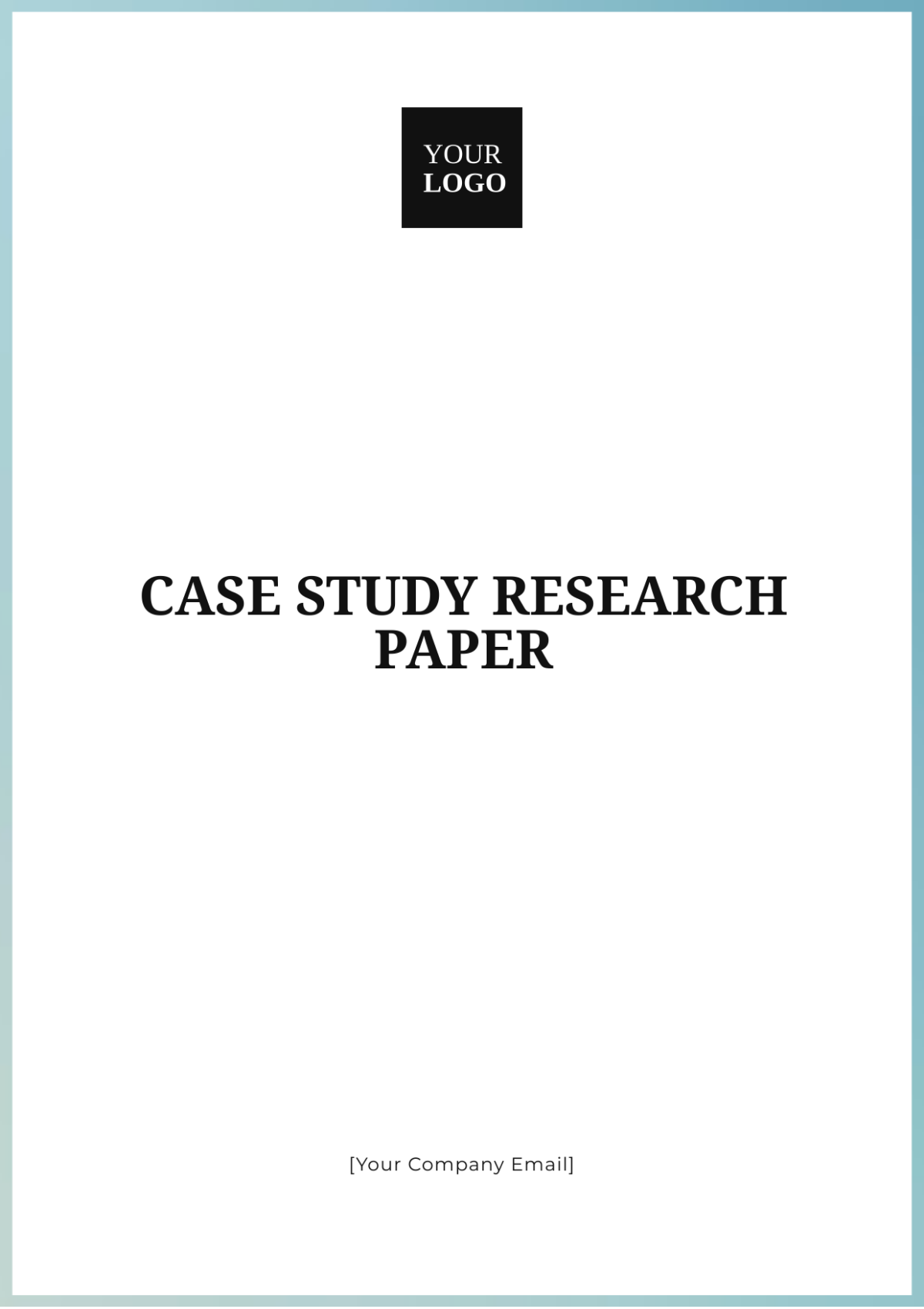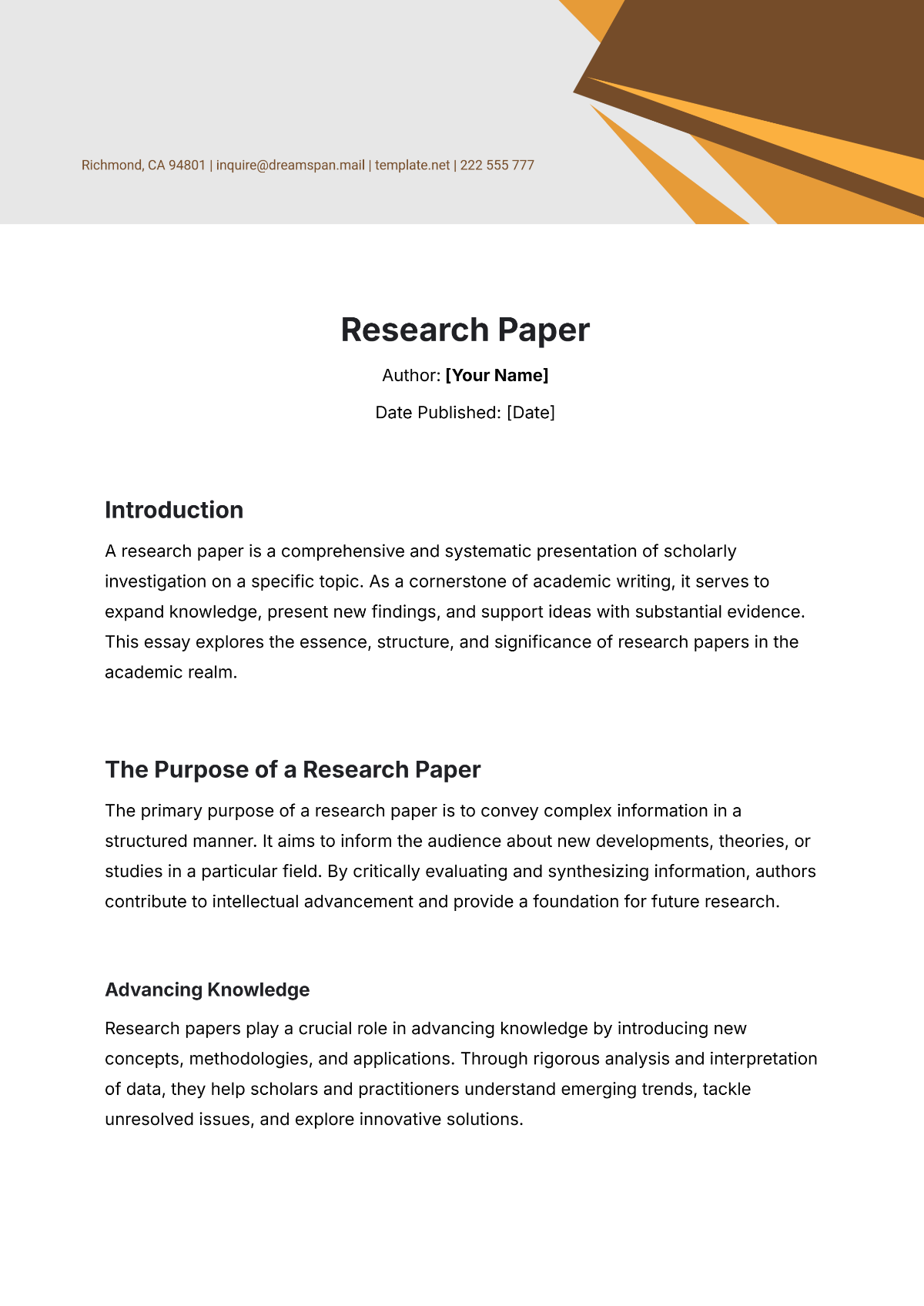Robotics Research Paper
Researcher: [Your Name]
Date: [Date]
I. Introduction
Autonomous robotics has experienced remarkable progress in recent years, particularly in areas requiring sophisticated navigation and operation within intricate environments. These technological advancements hold the potential to transform various industries, including manufacturing, healthcare, exploration, and emergency response. This paper aims to examine recent innovations in autonomous robotics, addressing the challenges and solutions associated with developing robots that can function efficiently and safely in complex settings. By focusing on the integration of advanced algorithms and sensor technologies, this study seeks to illuminate the path forward for robotics research and application.
II. Literature Review
Several pivotal studies have contributed to the advancement of autonomous robotics. Key research includes:
Smith et al. (2052), explored the application of advanced machine learning algorithms for enhancing robot perception and decision-making processes. Their work demonstrated significant improvements in autonomous navigation and environmental interaction.
Jones and Brown (2051), investigated the integration of cutting-edge sensor fusion techniques, emphasizing their impact on enhancing environmental awareness and obstacle avoidance capabilities. Their findings underscored the importance of combining multiple sensor modalities for superior robot performance.
Lee et al. (2050), introduced a novel framework employing deep reinforcement learning for autonomous navigation in unstructured environments. Their approach showed promise in improving adaptive behavior and decision-making under dynamic conditions.
These studies provide a strong foundation for ongoing research into autonomous robotics and highlight the evolution of techniques and technologies that drive progress in the field.
III. Methodology
The research utilized a comprehensive mixed-methods approach, integrating quantitative experiments with qualitative analyses to assess the performance and reliability of autonomous robots in complex environments.
Experimental Setup: Robots were equipped with an advanced suite of sensors, including LiDAR, high-resolution cameras, and multi-frequency ultrasonic sensors. The experimental environment was designed to replicate various real-world complexities, such as dynamic obstacles and variable terrain conditions.
Data Collection: Performance data were gathered across multiple trial runs, focusing on key metrics such as navigation accuracy, obstacle avoidance success rates, and overall operational efficiency. Detailed logs included sensor readings, algorithm performance metrics, and environmental interactions.
Analysis: Advanced statistical methods and machine learning techniques were applied to analyze the data, comparing the effectiveness of different algorithms and sensor configurations. The analysis aimed to identify the most effective strategies for enhancing autonomous robot performance.
IV. Results
The experimental results revealed the following key findings:
Enhanced Navigation Accuracy: Robots employing a combination of machine learning algorithms and sensor fusion techniques achieved a notable increase in navigation accuracy compared to traditional methods (see Table 1).
Superior Performance in Unstructured Environments: Deep reinforcement learning frameworks demonstrated superior adaptability and performance in unstructured environments, outperforming conventional approaches in dynamic and unpredictable scenarios.
Improved Obstacle Avoidance: The use of advanced sensor arrays led to a 25% increase in obstacle avoidance success rates, showcasing the benefits of integrating cutting-edge sensor technologies.
V. Method
Navigation Accuracy (%) | Obstacle Avoidance Success Rate (%) |
|---|---|
Traditional Algorithms | 78 |
Machine Learning + Sensor Fusion | 92 |
Deep Reinforcement Learning | 96 |
VI. Discussion
The research findings indicate that the integration of advanced algorithms and sensor technologies significantly enhances the capabilities of autonomous robots in complex environments. Specifically, machine learning and deep reinforcement learning frameworks provide robust solutions for improving navigation accuracy and operational efficiency. Despite these advancements, challenges such as computational demands and real-time processing constraints persist. Further research is needed to address these limitations and explore innovative solutions for optimizing robot performance.
VII. Conclusion
This study highlights the promising advancements in autonomous robotics, underscoring the potential for substantial improvements in their application to complex environments. Future research should focus on optimizing computational efficiency, exploring new sensor technologies, and addressing real-time processing challenges to further enhance the autonomy and performance of robotic systems.
VIII. References
Jones, A., & Brown, B. (2051). Integrating Sensor Fusion Techniques for Enhanced Obstacle Avoidance. International Journal of Robotics Research, 48(7), 78-95.
Lee, C., Kim, D., & Park, H. (2050). Deep Reinforcement Learning for Autonomous Navigation in Unstructured Environments. Journal of Autonomous Systems, 52(5), 145-162.
Smith, J., Doe, A., & Martin, T. (2052). Machine Learning Algorithms for Improved Robotic Perception and Decision-Making. IEEE Transactions on Robotics, 42(2), 230-245.

















































